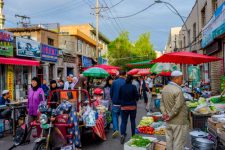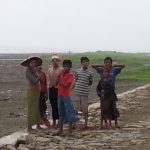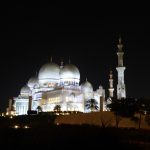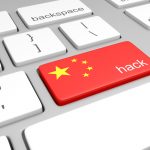Beijing Launches “All-Out Offensive” Against Uyghur Minority

Beijing has unleashed an “all-out offensive” in the far western province of Xinjiang on the pretext of a terrorist threat from members of the nation’s predominantly Muslim Uyghur ethnic minority.
Thousands of paramilitary personnel have been dispersed throughout the region, along with aerial patrols and satellite tracking of vehicles.
Questions have arisen as to what specifically sparked this operation, which has been described as China’s biggest show of force in a decade. And has resulted in continuing widespread repressions of the Uyghur people, including night time curfews in cities such as Kashgar.
Using a hammer to crack a nut
The incident that’s said to have led to the show of force is a knife attack that happened in Pishan County in Hotan prefecture on February 14. Three assailants killed five people, and injured another five during the attack, before authorities shot and killed them.
Small scale attacks, such as this, periodically flare-up in this restive region. Last December, four Uyghur people drove a car into a government building in southern Karakax County. The attackers set off explosives, killing one person, before being shot dead by police.
However, since 2014, there’s been no major attacks in the province, which the Chinese officially refer to as Xinjiang Uyghur Autonomous Region, but the Uyghurs recognise as the country of East Turkestan.
Beijing intensifies its western grip
So why is Beijing cracking down so hard at present? According to Dolkun Isa, secretary general of the Munich-based World Uyghur Congress, the likely reason it’s happening now is the Chinese Communist Party’s new secretary Chen Quanguo has taken over power in the region since August last year.
“He has implemented a number of policies that closely follow his approach to his term as party secretary for Tibet” Mr Isa told Sydney Criminal Lawyers.
The secretary general said that Mr Chen has introduced so-called “police convenience stations” to the region. These are effectively police stations that provide services to the public, like first aid kits, mobile phone chargers and repair tools.
Big brother providing service with a smile
But at the same time these “drop-in centres,” are equipped with heavy surveillance cameras, along with guards conducting 24 hour patrols and they can quickly turn into checkpoints if needed. The capital of Xinjiang, Urumqi, is expected to have 949 of these stations within an area of 339 square kilometres.
Mr Isa explained that these stations add to the already “extensive surveillance network that some have called ‘grid-style social management,’ as a means of controlling larger urban areas.”
Residents in many parts of Xinjiang, including the Han Chinese, have also been asked to hand over their passports to local police for safekeeping.
The surveillance and other extreme repressions that Tibetan people were forced to live under whilst Chen Quanguo was party leader of Tibet are notorious.
Beijing flexes its muscles
Part of Beijing’s show of might included the staging of a huge military rally in Urumqi that involved over 10,000 armed police lined up along the city streets, flanked by armed military vehicles. The rally was held outside of the city’s international convention centre on February 27.
Mr Chen told the gathered security personnel, “Bury the corpses of terrorists and terror gangs in the vast sea of the people’s war.”
Similar parades were held in the southern cities of Kashgar, Hotan and Aksu. And Chen dispatched a further 1,500 paramilitary personnel down to those regions.
Terrorists in our midst?
Stoking Beijing’s claims that the area is under the threat of a coordinated terrorist attack last week a group claiming to be the Islamic State released a video that appeared to threaten China and show Uyghur fighters training.
While it’s true that some Uyghur people have left China to make their way to Iraq and Syria to take part in the local conflicts, they number only around 100.
Any talk of actual terrorists operating in the Xinjiang region has always been played down.
Any reprisals or acts of violence are usually blamed on the harsh repressions and restrictions that the Uyghurs have had to suffer in their homeland.
And this is a land, where they’re fast becoming a minority. Uyghurs now make up 45 percent of the region’s population, while the Han Chinese now account for 40 percent. This is after years of Beijing encouraging Chinese settlers to make the move west.
Communist Takeover
“After occupying East Turkestan in 1949,” Mr Isa outlined, “the Chinese leaders pursued a policy of political oppression, racial discrimination, cultural assimilation, economic exploitation and ecological destruction.”
And the restrictions on the Uyghur people being able to express their own culture get more repressive by the day.
Take mosques for instance. Mr Isa relates that since July last year, the Chinese government has destroyed thousands of them.
Villages in the south have had 50 percent of these places of worship torn down, and to pray outside of state-sanctioned mosques is illegal, so authorities are effectively prohibiting Uyghurs from conducting their religious practices.
Chinese authorities monitor the mosques and choose their own Imams and other religious leaders. “The net result of these regulations has been the effective criminalization of Islam practiced outside these state-controlled mosques,” Mr Isa explained.
Today in parts of the region, there are bans on beards, on wearing headscarves in public, on practicing Ramadan and religious fasting.
Peaceful protest sparks violent reprisals
A peaceful protest by Uyghur people in Urumqi erupted into a violent clash with police on July 5 2009. During the riot and its aftermath, hundreds were killed and thousands imprisoned.
This resulted in a more heavy-handed approach in the area by the Communist party, which continues to this day. And these repressions led to a series of violent reprisals that peaked around the years 2013 and 2014.
A jeep carrying three Uyghur people ploughed into a crowd of tourists out the front of the Forbidden City in Beijing, killing four, in October 2013. Five knife-wielding assailants attacked and killed 29 people at Kunming railway station in the southwestern province of Yunnan, on March 1 2014.
In April that same year, two men detonated bombs at Urumqi station, killing themselves and one other person. While in May, two trucks drove through crowds at an open market in Urumqi, tossing explosives out their windows. Thirty-one were killed and 94 injured.
Will the real terrorists please stand up?
But as Dolkun Isa puts it, the violent incidents that have been carried out by a minority of Uyghur people are caused by the discrimination and marginalisation they’ve suffer under rule of what he describes as Chinese “state terrorism.”
The Uyghur people are experiencing an “increasing feeling of helplessness,” he said.
While Mr Isa stated that the continuing oppressions suffered by Uyghur people “cannot be used as a justification for violence.” He further pointed out that these reprisals “must be seen in the greater context of state violence that has been perpetrated over the past 65 years.”







